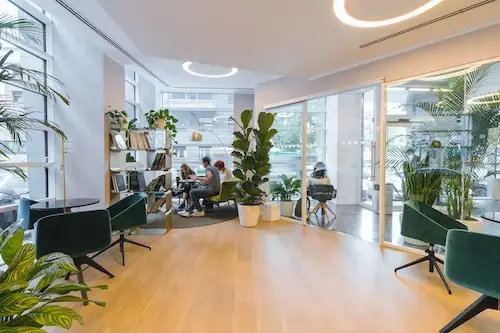With greater concern for climate change and pressing environmental issues, individuals and businesses are turning their attention towards greener practices and ways to reduce their reliance on the earth’s natural resources.
The construction industry is one of the sectors that is beginning to address its impact on the environment, especially given that it is one of the largest contributors of CO2 emissions. According to The 2020 Global Status Report for Buildings and Construction issued by the UN, the sector accounts for 38% of total global energy-related CO2 emissions. This article will look at some of the ways energy efficiency can be increased in the construction of buildings.
Better Insulation
Buildings should be designed to reduce heat loss, lowering the need for heating in colder months while staying cool in warmer months. The insulation in buildings should be as airtight as possible and this can be achieved in a number of ways.
High-performance insulation materials such as fiberglass, mineral (rock) wool and polyurethane can be used taking into account the different needs for floors, roofs and walls. Any cracks in the building can cause cold air to enter or warm air to leak outside so should be sealed.
Windows and doors are also responsible for air leaks and can greatly affect the insulation of a building. Both the windows and window frames need to be effective in insulating a building. Compared to low-quality or older windows, those made from high-quality materials, with extra panes of glass and low emissivity coatings can greatly improve the energy efficiency of a building. Door and window replacement can be a wise investment when it comes to better insulation.
Efficient Lighting
Upgrading to LED lighting can have significant energy and cost benefits for buildings. Compared to traditional incandescent bulbs, LEDs use 90% less energy while lasting 15 times longer and by 2027 their widespread use could reduce the country’s electricity use by an equivalent of 44 large electrical power plants. This amounts to a total cost saving of $30 billion.
Smart lighting systems are another energy-efficient way to light buildings. Using thermostat technology, these lights detect motion through sensors, switching off when there is no one in the room. This reduces much of the energy wastage which comes from lights being left on when there are no occupants.
The ability to connect and operate them through a smartphone or tablet also allows smart lighting to be controlled remotely. Energy efficiency can also be improved in buildings by maximizing the use of natural daylight. Known as ‘daylighting’ this uses windows and skylights, as well as other lighting design features to optimize sunlight in a building, reducing the need for artificial light.
Smart Thermostats
Smart thermostats can help to maintain the energy efficiency of a building’s indoor temperature by accessing real time weather information to control its heating and cooling needs. This can greatly reduce the energy consumption of HVAC systems helping them to operate more efficiently and at less cost while reducing the emissions from heating, ventilating, and cooling a building.
These are just some of the ways to increase the energy efficiency of a building.
